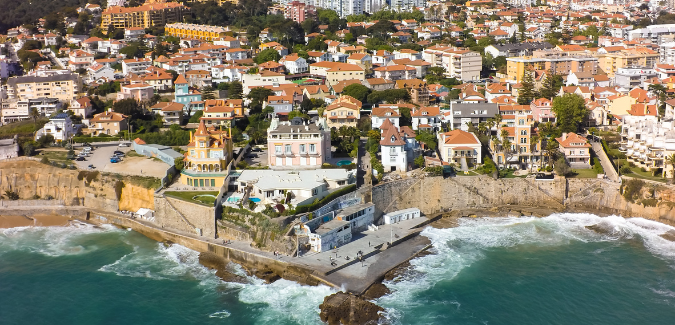
CASCAIS – THE CHARM OF THE ATLANTIC COAST
Cascais is located on the west coast of Portugal, right on the edge of mainland Europe and only 20 kilometres from Lisbon and its international airport. About two hour flight from most of Europe’s principal cities, it’s a surprising and welcoming place with lots of glamour, serenity and natural surroundings.
Cascais location is one of our biggest triumphs for attracting international events. Besides being close to the capital, the Cabo da Roca Cliffs, Sintra Unesco World Heritage site, and the National Park of Sintra Cascais are all reachable within 20 minutes drive. Very few destinations have the chance to offer such an intense blend of resources within a small range of space.
The region has made the most of its special aura and has invested in modernising its facilities, building innovative and state-of-the-art infrastructure. Despite its exclusive ambience it has continuously offered extremely competitive services to the international market, with an excellent price/quality ratio and a high level of added value for those who seek professionalism and a warm welcome.
Cascais has a wide range of infrastructures and accommodations that are perfect for hosting any kind of event, from meetings to conferences and incentives tours. Moreover, the wide choice of activities that are available for groups (including sports, cultural and leisure options) will ensure that any event, conference or meeting will be a great success.
COME FOR ONE REASON. STAY FOR MANY.
Some people come for the bright sunny days, to fix their gaze on the distant horizon, to admire the magnificent, unmatched coastline and to appreciate the nature park and warmth of the local people. Others come for the peace and quiet, for the enticing seaside esplanades and superb golf courses surrounded by unspoilt nature, to savour the delicious tastes of the ocean and for the thrill of the wind and the waves, the surfing and sailing. There are also those who come for the fascinating stories of kings and spies and for all the glamour, culture and entertainment to be found.
Many come for business meetings, for quick and easy access to Lisbon and its international airport and for the great diversity of places and geographical features on offer. Others come for the inviting footpaths and sand-dunes, for the exhilarating horse-riding
excursions and boat trips around the bay and for the sheer pleasure of being in Sintra’s doorstep.
Some come for the unforgettable welcome, for the genuine friendliness of the local people and for the unique feeling of comfort and well-being.
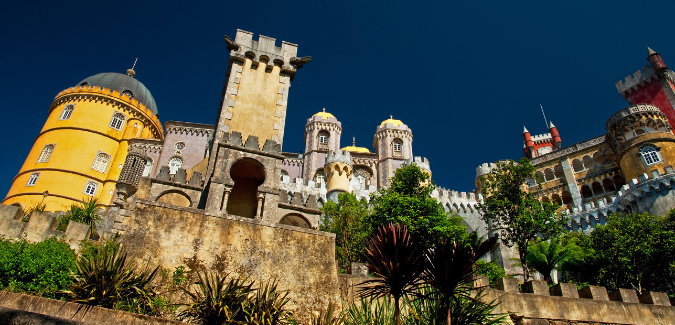
Cascais combines the glamour of the region’s history, culture, palaces and museums with the up-to-date quality of its services and infrastructures in an unmatched atmosphere of sea, nature, sports and gastronomy.
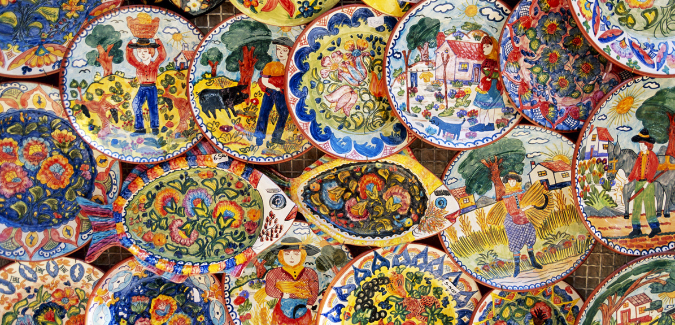
CASCAIS HISTORICAL OVERVIEW
Considered the Charm of the Atlantic Coast, Cascais is the ideal place for a break. With the genuine atmosphere of a peaceful seaside town, it’s always a very friendly and safe place to be with beautiful beaches protected by sand-dunes, cliffs and the nearby mountains. What’s more, you can take full advantage of its privileged location by popping into Lisbon for a fascinating stroll through the vibrant streets of a bustling European capital. Due to this proximity to Lisbon, Cascais is closely linked to much of Portugal’s political and military history having been a popular place of rest and relaxation for the royal family. The Cascais coast was the first place to be seen by ships approaching the Tagus Estuary and was the last image seafarers took with them when they headed for the far-flung corners of the Portuguese Empire. Its population witnessed the departure of the earliest explorers and saw them return with treasures from Africa, spices from India, and gold and gems from Brazil.
In more recent times, the region became a pioneer of Portuguese tourism when in 1870 the Portuguese royal family chose Cascais, more specifically the Cidadela, as its summer residence due to the excellent location, natural surroundings, temperate climate and high quality of the local sea and spa waters.
Due to the events of world history, and on account of Portugal’s rare status as a neutral country, the Cascais area was a place of immense strategic importance during the Second World War and became a major hub of international diplomacy and espionage as one of Europe’s safe havens during this time of crisis.
Cascais hosted many European celebrities, royal families and renowned artists, including Josef Von Habsburg of the Austrian royal family and King Humberto II of Italy.
Today, with over 650 years of history, the region has retained its cosmopolitan and sophisticated feel to become affectionately known as the Portuguese Riviera.
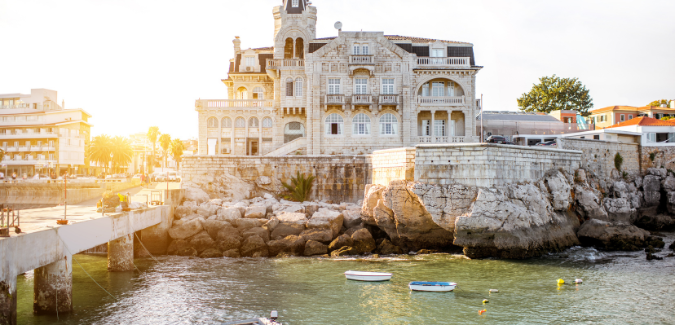
GETTING TO CASCAIS
BY PLANE
Cascais is served by Lisbon International Airport, located only 20 kilometres (15 miles) away. All major international airlines are represented here.
To reach Cascais from Lisbon airport, you may do so either from public transport or by car, being able to request your rental available through several companies in the market.
USING PUBLIC TRANSPORT
Airport – Cais do Sodré – Cascais
Without leaving the airport you can reach the Cais do Sodré station by Metro (underground) or “Aero Bus” and from there, take the train to Cascais.
- Underground
The Airport Metro Station operates from 06:30 to 01:00 a.m. From the airport, take the red line on the Metro to Cais do Sodré station on the green line, changing at Alameda station.
- “Aero Bus” Shuttle
Alternatively, you can take the “Aero Bus”: LINE 1 – CITY CENTER
Airport – Cais do Sodré: 7:00 – 23:20 / Cais do Sodré – Airport: 7:40 – 23:00; daily departures every 20 minutes. Direct connection to both airport terminals (Terminal 1 and 2).
- Train
From Cais do Sodré, there’s a regular train service (CP) directly to Cascais.
- By Taxi
Outside of Lisbon Airport there are many Taxis available to take you to Cascais.
- By Uber
Through the application it is easy to get an Uber to Cascais
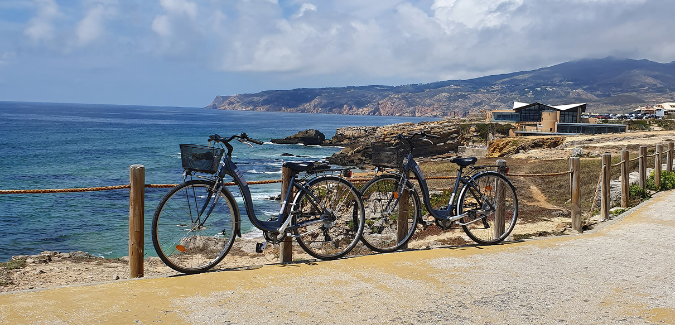
SELECTION OF NEARBY ATTRACTIONS
Baía de Cascais
With it’s splendid bay, small fishing boats and cosy narrow streets, Cascais has one of the finest sea views in Portugal.
The world’s top windsurfing location, with impressive views over the Atlantic
Palácio Nacional da Pena – Sintra
This Romantic-style palace was commissioned in the first half of the 19th century by D. Fernando of Saxe-Coburg-Gotha on the site of an old 16th century convent. It is full of unusual details and the surrounding landscape is as impressive as the architecture itself. From here you can enjoy breathtaking views of the park and the region as a whole.
The most Western point of Europe where you can have spectacular views over the Atlantic Ocean.
Cascais Bay
Ribeira beach, traditionally a fishermen's beach, has a pier where the fish were unloaded and then sold at the auction. Surrounding this area, you can see Cascais Town Hall, Seixas Palace, Avenue D. Carlos and Passeio D. Maria Pia.
Brief historical notes
The hustle and bustle of boats in the bay of Cascais was especially accentuated during the Portuguese discoveries. It was in 1488 that D. João II ordered the construction of the Tower of Santo António. Here, the first Captain of Vasco da Gama's fleet, Nicolau Coelho, landed and then moved to Sintra.
Later, during the Philippine government, the fortress of Nossa Senhora da Luz was built. After the Restoration of Independence (1640) the Citadel of Cascais was built. All these constructions had as main objective to prevent the entry of enemy troops in the Barra do Tejo.
Wall of Cascais
Three kilometers of “paredão”, between the beaches of São João do Estoril and Cascais, this is the perfect route to discover the coastline of the region.
There are two circuits with physical exercises, the Lifetrail and the Worldtrail, for those who want to get tired and several terraces for those who prefer to rest.
Statue of King D. Carlos I
This statue is located at the beginning of the D. Maria Pia promenade. Here, D. Carlos is immortalized looking at the sea, one of his great passions, aboard the yacht Amélia. Designed by Luís Valadares, it was inaugurated in 2008 on the centenary of the king's death.
The statue is made of bronze and rests on a base in "Azulino de Cascais" stone (a stone originally from Cascais).
Lighthouse of Santa Marta
The original construction was built in 1867 and was an 8 meter tower. It has undergone several works and currently the lighthouse tower is about 20 meters.
In addition to an exhibition on the Lighthouses of Portugal, as well as their lanterns, you can still see a section dedicated to the history of this lighthouse as well as the life of the Lighthouse keeper.
Fort of Santa Marta
Ordered to be built after1640 (after the restoration of Portuguese independence from Spanish rule), this fort was part of the plan for the defence and reinforcement of the barra do Tejo. When necessary, it was adapted to cross fire with the Citadel of Cascais. Later it lost its military value and that was when the Santa Marta Lighthouse was built.
Citadel of Cascais/Bay
Former governor's residence, this space was adapted to the royal residence in 1870 when King D. Luis and his wife D. Maria Pia de Saboia decided to spend the last months of summer here. This arrival transformed the, until then, fishing village into a court village. At the time of the establishment of the Republic, in 1910, this space served as a summer residence for some Presidents, namely President Óscar Carmona who took up residence in this palace for over 15 years. It went through a period of uncertainty and abandonment, and in the 21st century it was recovered and opened to the public as a living museum. At the service of the Presidency of the Republic, it receives several foreign Heads of State who visit our country.
Since the 16th century, this impressive fortification has marked the landscape of Cascais bay. Inside is the Hotel Pestana Cidadela Cascais, a luxury hotel overlooking the marina, the Cidadela Art District with an art gallery and open studios, and the Palácio da Cidadela, former summer residence of the Portuguese crown, a of the current official residences of the Presidency of the Republic.

